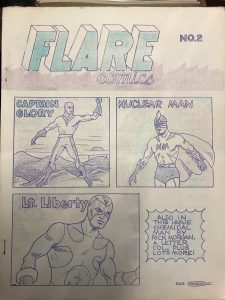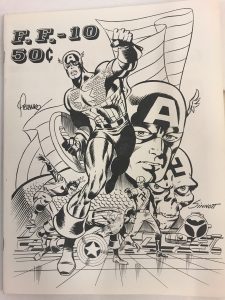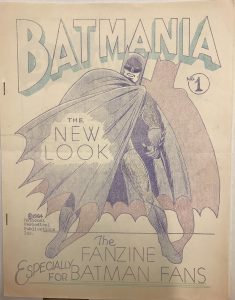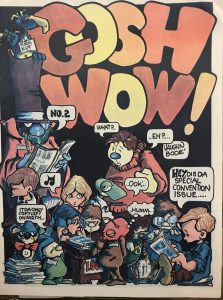The Rare Book & Manuscript Library is delighted to announce the acquisition of the collection of the late artist John Fantucchio (1938-2016), consisting of fanzines, art, con programs, and more. We extend our profound thanks to Mary Fantucchio for her generous gift.
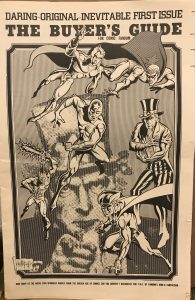
The history of comics fandom is fascinating, and dotted liberally with teenagers who went on to become professional artists or writers, editors or publishers. Many, in their early years, produced “fanzines”: self-published subscription-financed magazines by and for comics fans. Some fanzine editors got professional comics artists to create cover or interior art; others drew upon the larger fan community.
Among the latter, few were as talented–or had as interesting a story–as John Fantucchio. A graduate of the Art Institute of Boston, with an M.F.A. from Syracuse University, Fantucchio moved to the D.C. area and worked for a quarter century as an illustrator and art director for the C.I.A. He had his own commercial art business and ran his own art school. And he made a lot of fanzine art, distinctive in both style and signature.
As with most true comics fans, he was a prodigious collector, not only of the fanzines in which he appeared, but also entire runs of titles going back to the early 1960s. His collection reflected the breadth of interests many fans had: from fanzines on comics in general, to fanzines for a particular character (Spidey Fan and Batmania), or a particular author (Erbania and ERB-dom for Edgar Rice Burroughs), or for pop culture writ large (Cooper’s Hero-Hobby). Fanzines ran ads for those seeking or selling rare comic books or comic art–or simply for other fanzines. Newsletters and sell lists from entrepreneurs such as Russ Cochran and Bud Plant would develop into the “direct market” of comic book shops.
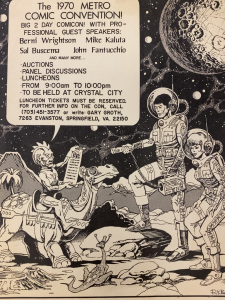
Fanzine publishers’ proficiencies varied as well. The zines could be typewritten or composed via Letraset; mimeographed or rexographed or offset printed; some had the glossy, full-color covers of newsstand publications. Fanzine editors/publishers such as Paul Levitz, Gary Groth, Roy Thomas, and others, would go on to distinguished professional careers as editors and publishers. Well known artists such as Joe Sinnott or Vaughn Bodē or Jim Steranko–even Jack Kirby!–would contribute cover art, and soon-to-be professional artists such as Joe Staton, Berni Wrightson, Mike Kaluta, Dave Cockrum, and more contributed interior illustrations.
John Fantucchio, almost uniquely among all these, became a celebrity without ever becoming a true professional. He would table at comics conventions and often be an honored guest.
The phenomenon of the fanzine is believed to have arisen out of science fiction fandom in the 1930s. Comics fans, like their science fiction precursors, could often feel marginalized in popular culture, and fandom communities provided a safe haven. Comics conventions of the early 1970s, which boasted a few thousand attendees at best, became the model for the massive phenomena of today’s comic cons, such as those in San Diego or New York, which host well over 100,000 fans each year. Fans and professionals still mingle freely, as they did in this renowned photo from a 1969 convention at New York’s Statler-Hilton. But in the decades before the mainstreaming of pop culture–and definitely before the rise of the internet and the proliferation of blogs–fanzines provided an outlet, a network, a reference resource, and a home. Researchers of the history of popular culture, publishing, social history, and more will find riches in this collection.

